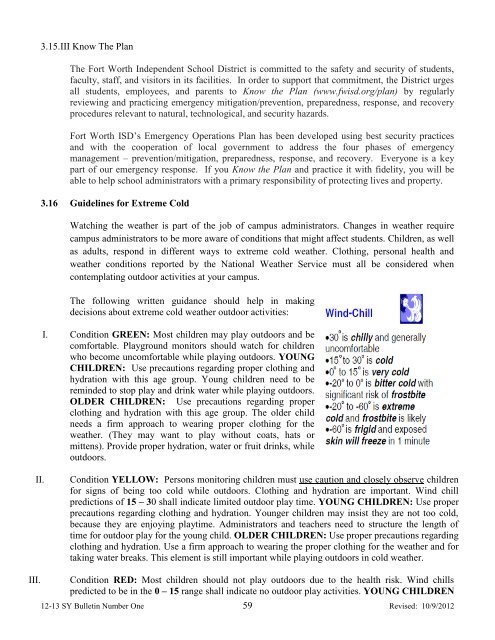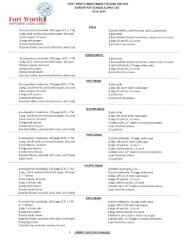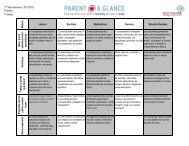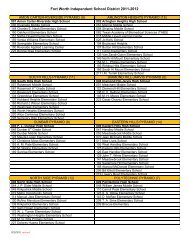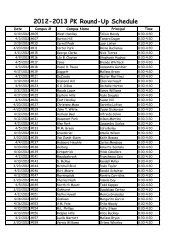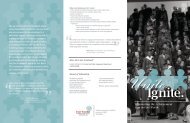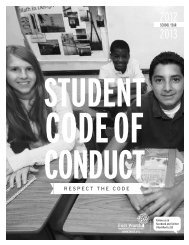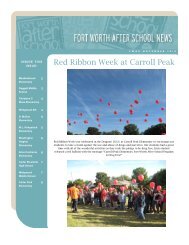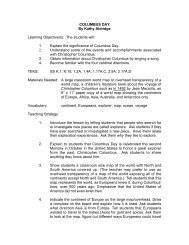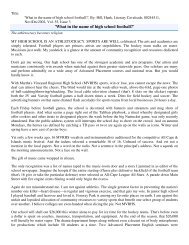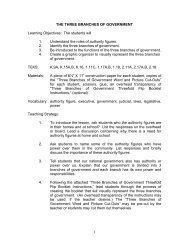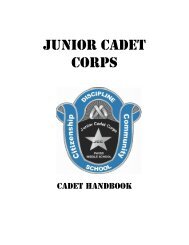Bulletin One 2012 2013 Final.pdf - Fort Worth ISD
Bulletin One 2012 2013 Final.pdf - Fort Worth ISD
Bulletin One 2012 2013 Final.pdf - Fort Worth ISD
Create successful ePaper yourself
Turn your PDF publications into a flip-book with our unique Google optimized e-Paper software.
3.15.III Know The Plan<br />
The <strong>Fort</strong> <strong>Worth</strong> Independent School District is committed to the safety and security of students,<br />
faculty, staff, and visitors in its facilities. In order to support that commitment, the District urges<br />
all students, employees, and parents to Know the Plan (www.fwisd.org/plan) by regularly<br />
reviewing and practicing emergency mitigation/prevention, preparedness, response, and recovery<br />
procedures relevant to natural, technological, and security hazards.<br />
<strong>Fort</strong> <strong>Worth</strong> <strong>ISD</strong>’s Emergency Operations Plan has been developed using best security practices<br />
and with the cooperation of local government to address the four phases of emergency<br />
management – prevention/mitigation, preparedness, response, and recovery. Everyone is a key<br />
part of our emergency response. If you Know the Plan and practice it with fidelity, you will be<br />
able to help school administrators with a primary responsibility of protecting lives and property.<br />
3.16 Guidelines for Extreme Cold<br />
Watching the weather is part of the job of campus administrators. Changes in weather require<br />
campus administrators to be more aware of conditions that might affect students. Children, as well<br />
as adults, respond in different ways to extreme cold weather. Clothing, personal health and<br />
weather conditions reported by the National Weather Service must all be considered when<br />
contemplating outdoor activities at your campus.<br />
The following written guidance should help in making<br />
decisions about extreme cold weather outdoor activities:<br />
I. Condition GREEN: Most children may play outdoors and be<br />
comfortable. Playground monitors should watch for children<br />
who become uncomfortable while playing outdoors. YOUNG<br />
CHILDREN: Use precautions regarding proper clothing and<br />
hydration with this age group. Young children need to be<br />
reminded to stop play and drink water while playing outdoors.<br />
OLDER CHILDREN: Use precautions regarding proper<br />
clothing and hydration with this age group. The older child<br />
needs a firm approach to wearing proper clothing for the<br />
weather. (They may want to play without coats, hats or<br />
mittens). Provide proper hydration, water or fruit drinks, while<br />
outdoors.<br />
II. Condition YELLOW: Persons monitoring children must use caution and closely observe children<br />
for signs of being too cold while outdoors. Clothing and hydration are important. Wind chill<br />
predictions of 15 – 30 shall indicate limited outdoor play time. YOUNG CHILDREN: Use proper<br />
precautions regarding clothing and hydration. Younger children may insist they are not too cold,<br />
because they are enjoying playtime. Administrators and teachers need to structure the length of<br />
time for outdoor play for the young child. OLDER CHILDREN: Use proper precautions regarding<br />
clothing and hydration. Use a firm approach to wearing the proper clothing for the weather and for<br />
taking water breaks. This element is still important while playing outdoors in cold weather.<br />
III. Condition RED: Most children should not play outdoors due to the health risk. Wind chills<br />
predicted to be in the 0 – 15 range shall indicate no outdoor play activities. YOUNG CHILDREN<br />
12-13 SY <strong>Bulletin</strong> Number <strong>One</strong> 59 Revised: 10/9/<strong>2012</strong>


